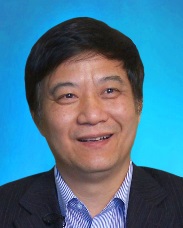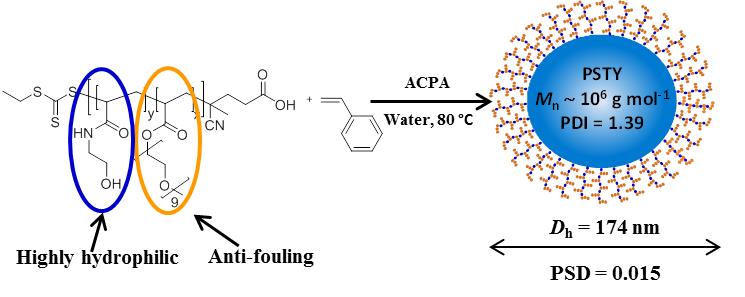
Wei You is an Associate Editor for Polymer Chemistry and an Associate Professor in the Department of Chemistry, University of North Carolina Chapel Hill, USA. His research focuses on the synthesis and characterization of novel multifunctional materials for a variety of applications, predominately in electronics and photonics. Wei’s group uses an interdisciplinary approach, interfacing chemistry, physics, materials science and engineering.
You can find all Editorial Board’s Top Picks papers in our web collection
Focus on Conjugated Polymers (Associate Editor: Prof. Wei You, UNC Chapel Hill, USA)
Conjugated polymers, due to their interesting optical and electrochemical properties, have found many applications, from solar cells, to light-emitting diodes, transistors, and sensors, to name a few. Design and synthesis of novel conjugated polymers have been a very research-active area, illustrated by the fact that Polymer Chemistry has published more than 450 contributions in the past five years (~10% of the total number of publications).
In my Editorial Board’s Top Picks, I highlight four papers, and two review articles:
1. Benzodifuran-alt-thienothiophene based low band gap copolymers: substituent effects on their molecular energy levels and photovoltaic propertiesLijun Huo, Zhaojun Li, Xia Guo, Yue Wu, Maojie Zhang, Long Ye, Shaoqing Zhang and Jianhui Hou
Polym. Chem., 2013,4, 3047-3056
Conjugated polymers for solar cells is one of hottest research areas in the past decade. Hou’s group took the conjugated backbone of benzodifuran-alt-thieno[3,4-b]thiophene (BDF-alt-TT) to carry out a comprehensive study on the impact of electron-withdrawing group on the optical and electrochemical properties of the parent polymer. It is an elegant study that covers design and synthesis, physical properties, computational modeling, and photovoltaic device characteristics. Such a comprehensive study of structure-property relationship is very impressive and useful to the field of conjugated polymer for solar cells.
2. Synthesis of donor–acceptor conjugated polymers based on benzo[1,2-b:4,5-b′]dithiophene and 2,1,3-benzothiadiazole via direct arylation polycondensation: towards efficient C–H activation in nonpolar solvents
Xiaochen Wang and Mingfeng Wang
Polym. Chem., 2014,5, 5784-5792
Though most conjugated polymers are made through Stille, Suzuki type polycondensations, recently, direct-arylation cross-coupling has emerged as an economically efficient and environment-friendly approach. Wang’s group focused on a particular polymer, PBDTBT, consists of alternating benzo[1,2-b:4,5-b0]dithiophene (BDT) as an electron donor (D) and 2,1,3-benzothiadiazole (BT) as the electron acceptor (A). What is really impressive is that they systematically investigated almost all reaction factors including catalysts, solvents, ligands, bases, additives, concentration of reactants and phase transfer agents. The great efforts had a good payoff: their optimized condition was able to achieve a weight averagemolecular weight (Mw) as high as 60 kg/mol in nearly quantitative yield and excellent C–H selectivity.
3. Optical and electrical properties of dithienothiophene based conjugated polymers: medium donor vs. weak, medium, and strong acceptors
Bijitha Balan, Chakkooth Vijayakumar, Akinori Saeki, Yoshiko Koizumi, Masashi Tsuji and Shu Seki
Polym. Chem., 2013,4, 2293-2303
Donor-acceptor to create conjugated polymers is the most popular approach to control the band gap and energy level of conjugated polymers. The Seki group conducted an interesting study to investigate the strength of acceptor (weak, medium and strong) with a fixed donor, dithienothiophene in deciding optical and electrochemical properties of the resulting polymers. Furthermore, they did the computational modeling and device mobilities with different methods. An elegant work with thorough synthetic details and comprehensive study.
4. Low band-gap benzothiadiazole conjugated microporous polymers
Shijie Ren, Robert Dawson, Dave J. Adams and Andrew I. Cooper
Polym. Chem., 2013,4, 5585-5590
Conjugated microporous polymers (CMPs), combining microporosity, high surface areas with extended conjugation, can find a range of potential applications, including light-harvesting and sensing. The Cooper group created a low band gap CMP by incorporating the popular benzothiadiazole unit, via transition metal catalyzed cross-coupling polycondensation. Most interestingly, the fluorescence of one of the polymers was quenched by the inclusion of C60 in the pores, demonstrating the potential applications of such materials in efficient light harvesting or energy conversion.
Review articles:
1. Controlled polymerizations for the synthesis of semiconducting conjugated polymers
Ken Okamoto and Christine K. Luscombe
Polym. Chem., 2011,2, 2424-2434
Conjugated polymers synthesize by chain-growth mechanism (directly or indirectly), though much less explored when compared with the more popular step-growth mechanism, offer a number of unique advantages, including controlled molecular weight, low dispersity, and ease of preparing block copolymers. This review by the Luscombe group provided a rather comprehensive review (up to 2011) on this topic, covering various controlled polymerization methods to synthesize conjugated polymers, including living anion polymerization, ring-opening metathesis polymerization and chain-growth condensation polymerization.
2. Well-defined two dimensional covalent organic polymers: rational design, controlled syntheses, and potential applications
Zhonghua Xiang, Dapeng Cao and Liming Dai
Polym. Chem., 2015,6, 1896-1911
Two-dimensional (2D) covalent organic polymers (COPs) and derivatives are an emerging category of conjugated polymers, which hold great potential for a large variety of applications, including gas storage, energy conversion and storage, and sensing. The Dai group reviewed the recent progress in this exciting field of research, covering the rational design, controlled syntheses and potential applications of 2D COPs with various well-defined structures and properties. An up-to-date review on this topic with many beautiful structures.













 Dr. Priyadarsi De is currently Associate Professor in the Department of Chemical Sciences in the Indian Institute of Science Education and Research Kolkata (IISER-K). He has held positions at University of Massachusetts Lowell, USA, where he worked as a post-doctoral fellow in the group of Professor Rudolf Faust, and in Southern Methodist University (Dallas, USA) with Professor Brent Sumerlin. He has also spent time in industry, as a Distinguished Scientist at PhaseRx Pharmaceuticals, Seattle, USA.
Dr. Priyadarsi De is currently Associate Professor in the Department of Chemical Sciences in the Indian Institute of Science Education and Research Kolkata (IISER-K). He has held positions at University of Massachusetts Lowell, USA, where he worked as a post-doctoral fellow in the group of Professor Rudolf Faust, and in Southern Methodist University (Dallas, USA) with Professor Brent Sumerlin. He has also spent time in industry, as a Distinguished Scientist at PhaseRx Pharmaceuticals, Seattle, USA.

